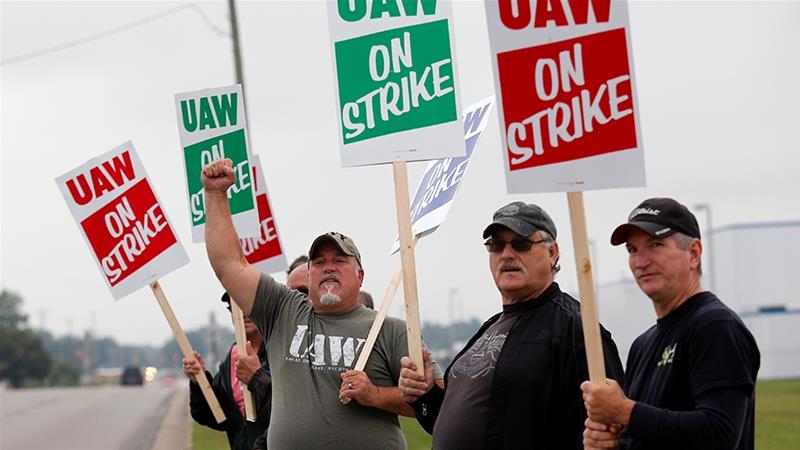United Auto Workers Go on Strike Against General Motors
September 20, 2019
After the current agreement with General Motors expired, leaders of the United Auto Workers in Detroit voted unanimously to authorize a strike, which effectively started Monday morning. Approximately 49,000 union members in the Midwest and South have taken part in this strike, halting production in the United States. It is a new addition to the recent increase in labor activism, and has the potential to threaten Canadian and Mexican operations as well if it is prolonged.
The last strike on GM was back in 2007, from September 24 to September 27, of 73,000 UAW members. However, this time the strike is predicted to last much longer, as protesters this time have shown a stronger resolve to have their demands met and the political climate is increasingly focusing on economic inequality. The New York Times says that workers want a fairer contract and more job security than what they got during the recession. Despite the fact that there are fewer UAW members in GM than its competitors Ford Motor and Fiat Chrysler, which the UAW extended its contracts with, leadership at UAW targeted GM because of the profits it made. Over the last three years, it has made $35 billion, while closing auto factories in an effort to cut costs, eliminating thousands of jobs. Part of their demands is for GM to reopen such closed factories in Ohio, Baltimore, and Michigan and to keep the factory in Detroit open. In response, GM offered to “make more than $7 billion in new investments in plants in the United States, add 5,400 jobs and increase pay and benefits.” However, the UAW decided to strike.
According the the Wall State Journal, the strike, which started Monday, is costing GM from $50 million to $100 million every day in lost profits, making it one of the largest private-sector strikes of America in years. On Tuesday, an internal letter was released that stated GM has dropped health care benefits for those who have gone on strike. Experts say that GM considers this a standard procedure to scare the workers, but instead it may be inciting the strike even further. Moreover, in the past the company continued health care even in times of strike in order to maintain relations afterwards, so this is an unusually aggressive move. In the meantime, the union will tap into its strike fund of more than $750 million to pay for workers’ health care under COBRA, while its lawyers review the action. On Wednesday, 1,200 workers were dismissed from an assembly plant in Ontario, Canada due to parts shortages from the strikes. The strike may also affect GM’s suppliers of parts like seats and brake systems, since production is stopped if the plant is. Consumers may also see the effects if negotiations take too long and the strike is prolonged.
These events come during a time when both the UAW and GM has other problems. Leadership of the UAW is under federal investigation for corruption and membership is dwindling. Meanwhile, GM wanted to spend billions in new technologies and cut other costs. Ultimate negotiations made with GM will affect future deals with Ford and Fiat Chrysler as well.
There has been no notable progress in negotiations between UAW and GM. During the strike, union members receive a strike pay of $250 a week, which is significantly less than their usual wages.

















































































































































